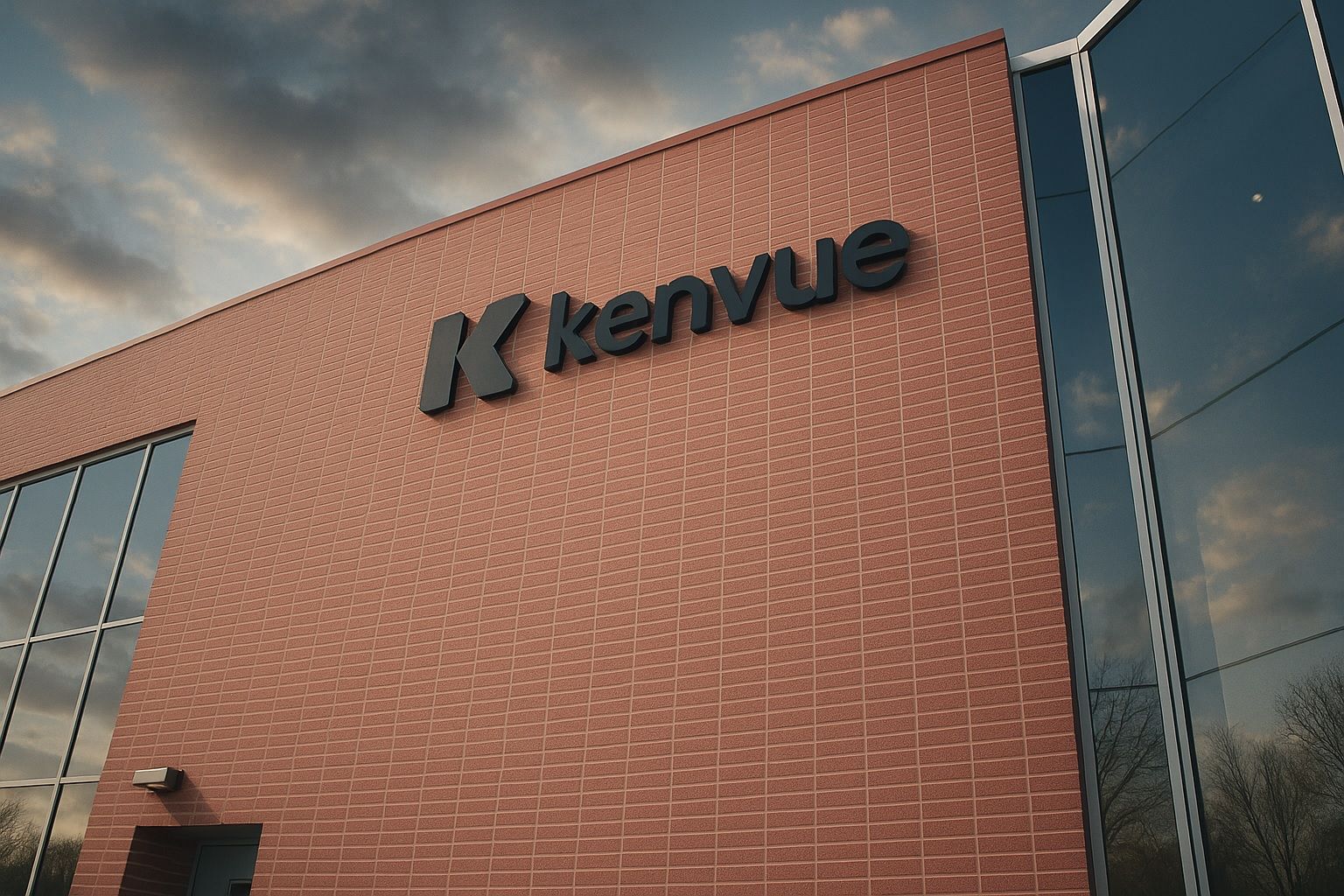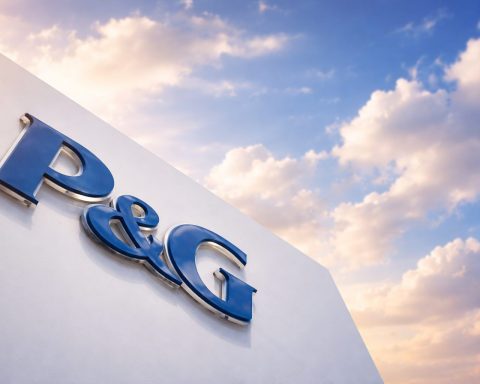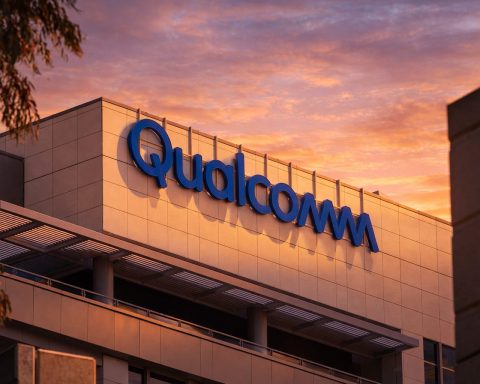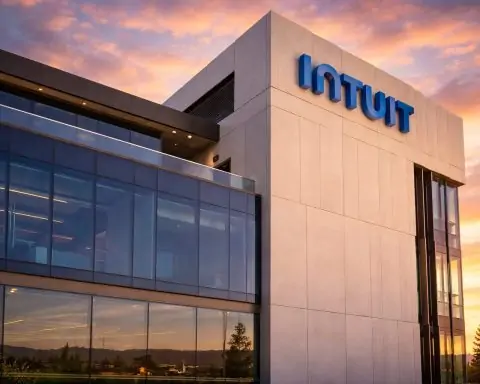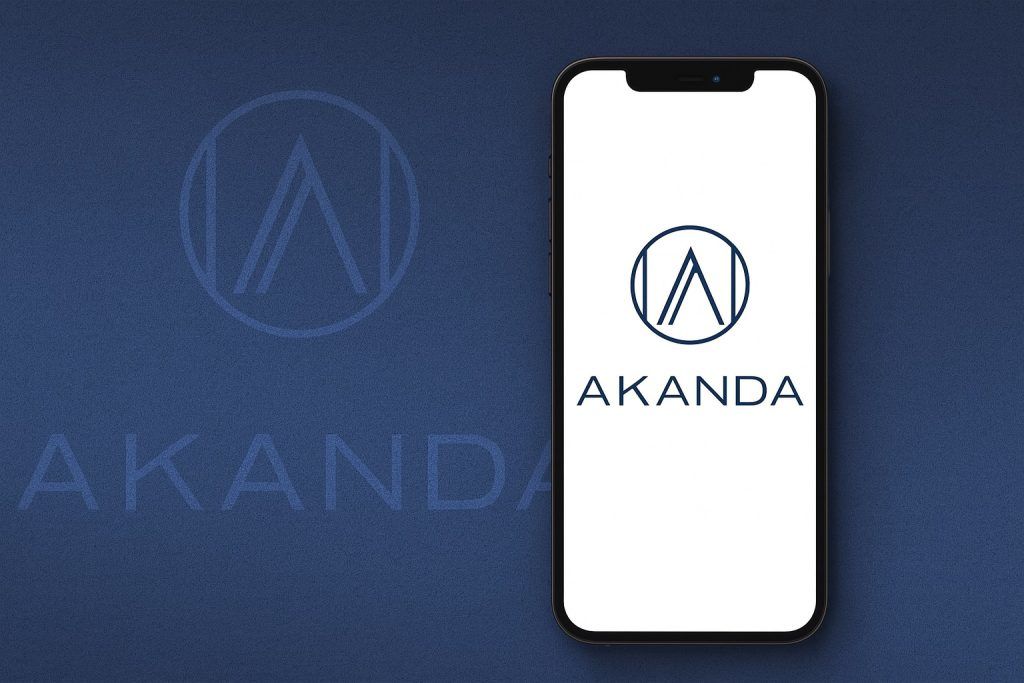- Stock Slump: Kenvue Inc. stock has plunged to a record low around the mid-$14 range after a 13% single-day drop on Thursday, October 16 [1]. Shares are now down roughly 34% year-to-date [2], underscoring investors’ jitters.
- Talc Lawsuit Fears: The latest slide was sparked by news of the first U.K. lawsuits – representing about 3,000 claimants – alleging that Johnson’s Baby Powder (now a Kenvue product) caused cancer [3] [4]. Lawyers estimate potential damages around £1 billion ($1.3B) [5], raising fears of hefty liability for Kenvue.
- Tylenol Autism Controversy: Adding to the pressure, President Donald Trump warned pregnant women in late September to avoid Tylenol (acetaminophen), claiming a link to autism – a claim refuted by medical experts and courts [6]. The White House’s stance and an FDA move to add warning labels have already erased about $10 billion from Kenvue’s market value [7], denting investor confidence.
- Analyst & Expert Reactions: Wall Street is split on Kenvue’s outlook. Several banks slashed price targets (e.g. JPMorgan cut from $24 to $21 [8]; UBS from $23 to $17 [9]) amid these health scares. Consensus 12-month targets hover around ~$21 [10] – about 50% above current prices – but come with cautious “neutral” ratings [11] given near-term uncertainties. Credit agency Moody’s even reaffirmed Kenvue’s strong A1 debt rating but downgraded its outlook to “negative”, citing softer sales and potential negative free cash flow after dividends [12].
- Dividend & Valuation: Despite turmoil, Kenvue raised its quarterly dividend to $0.2075 (payable Aug. 2025), which at current share prices offers a rich ~5.9% annual yield [13]. The sell-off has left Kenvue trading at a discount to consumer health peers, leading some observers to question whether the household-brand giant – home to Tylenol, Band-Aid, Listerine, Neutrogena, Zyrtec and more – is now undervalued [14] [15].
Stock Hits a 52-Week Low on Legal Woes
Kenvue’s shares collapsed to an all-time low since their mid-2023 IPO, closing around $14 after Thursday’s 13.2% plunge [16]. The one-day drop – Kenvue’s worst on record – was triggered by headline risks that blindsided investors. By early Friday, October 17, the stock stabilized slightly (up about 0.6% in pre-market trading) after the rout [17]. Still, at roughly 40% below its IPO price, the Johnson & Johnson spinoff has seen its market capitalization shrink to about $30–31 billion [18].
This dramatic sell-off came despite broader markets being relatively calm – the S&P 500 fell only ~0.6% on Thursday [19]. In other words, Kenvue’s slump is largely company-specific, not a general market downturn. As of now, year-to-date performance is deeply in the red (–34% [20]), a stark contrast to the flat or modest gains for major indices. The stock had already been trending down for weeks before this latest drop, reflecting growing unease around Kenvue’s unique challenges.
U.K. Talc Lawsuit Sparks Sell-Off
The immediate catalyst for the mid-October plunge was news of new litigation overseas. On October 16, reports emerged that a U.K. High Court lawsuit was filed on behalf of ~3,000 plaintiffs claiming that Johnson’s Baby Powder caused ovarian cancer, mesothelioma, and other illnesses [21] [22]. This is the first time British courts will hear such claims, which mirror tens of thousands of U.S. lawsuits over talc-based powders. Notably, Kenvue – which was spun off from J&J in 2023 – inherited responsibility for J&J’s consumer products and “any purported liability for talc-related litigation outside of the U.S. and Canada,” according to J&J [23]. In other words, Kenvue is squarely on the hook for these international cases.
Investors were spooked by the scale and implications of the U.K. case. Law firm KP Law, representing the claimants, estimates the suit’s value at about £1 billion (~$1.34 billion) [24]. Such a massive potential payout, if it came to pass, could meaningfully hit Kenvue’s finances. Citi analyst Filippo Falorni warned of uncertainty around the ultimate liability, stating “we are cautious about the financial implications for Kenvue” given the legal precedents in U.S. talc cases [25]. (In the U.S., juries have occasionally awarded multi-million-dollar verdicts in talc lawsuits, including a recent $966 million judgment against J&J [26], though that was an outlier case under appeal.)
Crucially, U.K. courts operate differently: any damages would be determined by judges and generally limited to compensatory (actual) damages, unlike the large punitive damages seen in some U.S. jury trials [27]. Citi’s note on the case pointed out that fact as a silver lining – British awards tend to be lower than headline-grabbing U.S. verdicts [28]. Nonetheless, the prospect of a multi-year legal battle and a potentially sizeable payout added a new overhang on Kenvue’s stock.
Kenvue’s Response: Kenvue has firmly denied the allegations, standing by the safety of its talc products. In a statement, the company reiterated that Johnson’s Baby Powder “did not contain asbestos, and does not cause cancer,” refuting the lawsuit’s claims [29]. (J&J and Kenvue transitioned the product to a cornstarch-based formula in 2020 in the U.S. and 2023 in the U.K., discontinuing talc sales [30].) Kenvue is expected to vigorously contest the U.K. cases. However, the mere existence of thousands of pending claims – and the reminder of J&J’s talc saga – has clearly made investors nervous about headline risk and potential liability costs.
Tylenol Autism Scare Rattles Investors
The talc controversy isn’t Kenvue’s only reputational hurdle. Over the past month, the company’s flagship painkiller Tylenol (acetaminophen) was thrust into an unexpected firestorm after President Trump and his administration questioned the drug’s safety in pregnant women. In a Sept. 22 White House briefing, President Trump – flanked by Health Secretary Robert F. Kennedy Jr. (a noted vaccine skeptic) – told Americans to “stop taking Tylenol” if expecting, asserting that prenatal acetaminophen use might cause autism or ADHD in children [31] [32]. This extraordinary pronouncement from the Oval Office elevated a fringe theory to national headlines, despite a lack of scientific consensus.
Kenvue, which manufactures Tylenol, immediately pushed back. “We believe independent, sound science clearly shows that taking acetaminophen does not cause autism. We strongly disagree with any suggestion otherwise and are deeply concerned with the health risk this poses for expecting mothers,” the company said in a statement responding to Trump’s comments [33]. Dozens of medical and research organizations also blasted the claims, noting that extensive studies show Tylenol’s safety during pregnancy [34] [35]. Britain’s health regulator and the European Medicines Agency both reaffirmed that no causal link between acetaminophen and developmental disorders has been proven [36].
Despite these reassurances, the political spotlight sparked a sell-off. Kenvue’s stock plunged over 7% on Sept. 22 (the day of Trump’s warning) and lost roughly 14% of its value in the weeks after the issue first surfaced in early September [37] [38]. In fact, news leaked on Sept. 5 that RFK Jr. was preparing a report on Tylenol and autism, triggering a 9% drop that day alone [39] [40]. By late September, Kenvue shares were at record lows (around $15) before briefly bouncing ~6% when analysts noted no new scientific evidence had emerged [41].
Perhaps most unsettling to investors was the FDA’s response. Following the Trump administration’s lead, the U.S. Food and Drug Administration moved to add a new warning label on acetaminophen products about potential neurodevelopmental risks [42] – a highly unusual step given the mainstream scientific view that evidence for such a link is inconclusive or debunked. (A federal judge in 2024 had dismissed lawsuits alleging Tylenol caused autism, specifically citing the lack of reliable evidence [43] [44]. That decision is under appeal, but no regulatory agency had previously required such a warning.) The FDA’s label change, combined with the President’s remarks, created a public relations nightmare for Kenvue. “In 25 years of doing this work, I’ve never seen the President, the HHS Secretary, and the FDA join hands with the plaintiffs’ bar like this,” commented one crisis communications expert of the unusual situation [45].
For Kenvue, the fallout has been costly. Analysts estimate the Tylenol scare shaved roughly $10 billion off Kenvue’s market cap within weeks [46]. Beyond the stock price, there’s concern that Tylenol’s brand might suffer in the court of public opinion, potentially denting future sales if consumers lose confidence. (Tylenol is one of Kenvue’s top-selling products globally.) Kenvue’s leadership shake-up earlier in the year now looks prescient – the company had already ousted its CEO in July and launched a strategic review, partly due to sluggish growth and activist investor pressure [47] [48], but also to prepare for “unforeseen headwinds.” Few imagined a presidential broadside against Tylenol would be one of those headwinds.
It’s worth noting that many experts consider the autism claims unfounded, and thus any legal risk to Kenvue from acetaminophen is limited. A coalition of medical organizations stated the data “do not support the claim that Tylenol causes autism” [49] [50], and even plaintiffs’ lawyers face an uphill battle given prior court rulings. Citi’s analysts expect Kenvue’s stock to eventually recover as “no new science” was presented in the White House briefing [51] [52]. However, the near-term damage – in perception and investor sentiment – has been done. The Tylenol episode underscores how sensitive a consumer health company like Kenvue is to trust and safety narratives.
Analysts Cut Targets but See Upside Longer Term
Facing this one-two punch of talc and Tylenol troubles, Wall Street analysts have tempered their views on Kenvue in the short run, even as many maintain a neutral stance with hopes for a rebound. In early October, a flurry of revised stock calls hit the tape:
- Barclays slashed its price target from $20 to $17, citing “muted and decelerating” growth in personal care products and the overhang from health-safety headlines [53]. Barclays kept an Equal-Weight (neutral) rating.
- Goldman Sachs trimmed its target to $19 (from $22) and likewise maintained a neutral view [54].
- Evercore ISI cut its target from $23 to $18, noting that public debate around acetaminophen’s safety poses a reputational risk that could weigh on near-term performance [55].
- UBS went further, lowering its projection from $23 all the way to $17 and warning that recent developments add uncertainty to Kenvue’s outlook [56] [57]. UBS’s analyst Peter Grom continues to rate the stock Neutral [58].
- J.P. Morgan was one of the few still somewhat bullish – in a report on Oct 10, JPMorgan set a target of $21 (down from $24) while rating Kenvue Overweight [59] [60]. This implies confidence that the stock can bounce back once current fears abate.
Despite these cuts, the average 12-month price target for Kenvue remains around $20–21 per share [61]. Market consensus compiled by StockAnalysis and MarketBeat indicates an approx. $20.90 mean target [62], which is nearly 50% above the latest trading price. In other words, analysts on balance see significant upside if Kenvue can navigate its challenges. The caveat: most of those same analysts are in “wait and see” mode, with Hold/Neutral ratings predominant [63]. As one might expect, few are ready to pound the table on a stock facing legal uncertainties and unpredictable political risk.
Aside from price targets, experts are providing context on Kenvue’s fundamentals. Valuation-wise, Kenvue now trades at roughly 21–22 times trailing earnings, a modest multiple for a stable consumer health business [64]. Its forward price-to-earnings (P/E) could be even lower – based on Kenvue’s own guidance of ~$1.00–1.05 in 2025 EPS [65], the forward P/E is around 14x at the current stock price. That looks cheap relative to peers like Haleon or other defensive consumer goods firms, which often trade closer to 18–20x earnings. “Kenvue offers stable financials, a robust 5% dividend yield, and trades at a significant discount to peers,” noted a recent Seeking Alpha analysis [66]. This discount reflects the cloud of litigation and low growth, but it also hints at potential value if those clouds clear.
Moody’s Ratings affirmed Kenvue’s investment-grade A1 credit rating in October but changed its outlook to negative, signaling caution. The ratings agency cited soft organic sales and high leverage post-spinoff, and projected that free cash flow could turn negative this year after dividend payouts due to one-time restructuring costs and legal expenses [67]. Essentially, Kenvue’s strong balance sheet (backed by steady cash from Tylenol, Listerine, etc.) is being offset by rising costs and shareholder returns. If Kenvue’s earnings falter or if big legal bills come due, the company might be stretched – a scenario Moody’s is monitoring. However, with over $15.4 billion in annual revenue and healthy gross margins near 58% [68] [69], Kenvue is far from fragile. The question is whether it can resume growth and put these distractions behind it.
Rich Dividend, Iconic Brands Attract Investors – Cautiously
One factor that could help put a floor under Kenvue’s stock is its dividend. In late July, Kenvue’s board approved a slight dividend raise – up 1.2% to $0.2075 per quarter, or $0.83 annually [70]. At the stock’s new lows, this translates to an eye-catching 5.5–6% dividend yield [71] [72]. Such a yield is well above the S&P 500 average and even higher than many utility and telecom stocks. Income-oriented investors may find Kenvue appealing at these levels, essentially getting paid to wait for a turnaround. “Kenvue’s dividend is very attractive now – but you have to believe the issues are temporary,” one analyst remarked. Notably, Kenvue’s dividend payout ratio is over 100% of earnings [73] [74] at the moment (meaning it pays out more in dividends than it earns, due to recent earnings dips). Management has indicated confidence that earnings will grow into the dividend; however, if profits disappoint, that rich payout could come under scrutiny in future years.
Meanwhile, Kenvue’s portfolio of household-name brands remains a key asset. As a newer standalone company, Kenvue now manages most of J&J’s former consumer health staples across self-care, OTC medicine, skin care, and essential health categories. This includes Tylenol and Motrin (pain relief), Zyrtec and Benadryl (allergy meds), Band-Aid bandages, Listerine mouthwash, Visine eye drops, Neutrogena and Aveeno skincare, Johnson’s baby products, and more [75]. These products are ubiquitous in homes worldwide and generally enjoy #1 or #2 market share positions in their categories. That brand equity provides a solid foundation – consumers are likely to keep buying these staples absent a compelling reason not to. This is why some investors see the current slump as potentially overdone. “This is not a trash company… it operates around the world,” one retail shareholder argued on a forum, noting that lawsuits and scares “are not a new thing” for large consumer firms and often “most of them result in nothing” in the long run [76].
That said, Kenvue’s business faces challenges beyond the headlines. As a consumer health pure-play, it lacks the high-growth pharmaceuticals segment that its former parent J&J enjoys [77] [78]. Kenvue’s recent financial results have been underwhelming – in Q2 2025, sales declined ~4% year-over-year to $3.84 billion and adjusted EPS slid to $0.29 [79]. All three of its divisions (self-care, skin health, and essential health) saw declining or flat sales [80]. This stagnation is partly why J&J spun off Kenvue to begin with: the consumer unit had “slow and inconsistent revenue growth” that dragged on J&J’s overall performance [81]. Now on its own, Kenvue must prove it can reinvigorate these brands – through marketing, product innovation, or maybe acquisitions – to generate growth. The company has been investing in advertising (especially for Neutrogena) and exploring e-commerce channels to reach younger consumers [82] [83]. But competition is fierce (e.g., generic drugs undercut Tylenol on price; upstart skincare lines challenge Neutrogena’s shelf space [84]). This competitive backdrop means Kenvue can’t afford major hits to its reputation or big legal payouts, which would siphon resources away from growth initiatives.
Outlook: Caution in the Short Term, Optimism in the Long Term?
Looking ahead, Kenvue’s near-term trajectory will depend on how it manages these overlapping crises. Company insiders emphasize that the talc and Tylenol issues, while serious, are manageable. The talc litigation could take years to play out; Kenvue may opt to settle some cases if it can cap the liability at a reasonable level, or fight in court if it believes the science is on its side. Importantly, unlike in the U.S., the U.K. does not allow punitive damages, which should keep potential payouts lower [85]. As for Tylenol, the best medicine for Kenvue may simply be time and data – if no new evidence emerges linking acetaminophen to developmental issues, the controversy may fade from headlines. Health authorities in Europe and other regions have already reaffirmed Tylenol’s safety [86], and even the U.S. FDA’s label decision could be walked back under a future administration or if legal appeals uphold the previous court ruling dismissing the claims.
Executive leadership changes could also shape Kenvue’s future. In July, Kenvue’s board abruptly replaced CEO Thibaut Mongon (a J&J veteran who led the spin-off) and installed Kirk Perry – a former Procter & Gamble executive – as interim CEO [87]. This was accompanied by a broad strategic review with advisors from Centerview Partners and McKinsey [88]. According to Reuters, Kenvue’s board has considered options including selling or spinning off underperforming units (such as some skin care brands) or even a sale of the entire company [89] [90]. However, the recent turmoil may have “made the company unsellable until all Tylenol claims are resolved,” as several dealmakers told Reuters [91]. It appears more likely that Kenvue could divest non-core products to raise cash and sharpen its focus. Analysts note there is interest from other firms or private equity in brands like Neutrogena and Aveeno [92], which could fetch billions. Any such moves would take time, and Kenvue will want to avoid a fire sale, especially with its stock depressed. For now, the strategic review signals that Kenvue is not complacent – the company knows it needs to boost shareholder value and is open to bold measures once the dust settles.
In the short term, investors should brace for continued volatility. Headlines around the UK talc trial (and any potential settlement talks) or further political commentary on drug safety could swing the stock. Kenvue is also due to report its Q3 2025 earnings soon (expected in early November), which will shed light on whether the Tylenol scare dented sales and how inflation or currency trends are affecting its margins. Management’s commentary on these issues – and any updated guidance – will be closely watched. A reassuring earnings report or simply the absence of new negative developments could help the stock stabilize above its lows.
Longer term, the outlook for Kenvue is cautiously optimistic according to many industry watchers. The company remains a cash-generative, defensive business anchored by products that consumers buy in good times and bad. If Kenvue can put legal uncertainties behind it (through court victories or reasonable settlements) and execute on revitalizing its brands, there is potential for a solid turnaround. Several analysts highlight that today’s challenges might be transient, while the value of Kenvue’s franchise is enduring. “We see limited judicial risk from these [Tylenol] claims, though the negative headlines could dent Tylenol sales,” wrote UBS in a note, adding that once regulators made it clear no new evidence was presented, Kenvue’s stock “bounced back” from its late-September lows as worst-case fears eased [93] [94]. This suggests the market may have overreacted, and a gradual recovery is plausible.
Moreover, the high dividend yield provides some compensation and could attract a base of yield-focused investors who lend support to the share price. Kenvue’s dividend policy – to grow payouts annually, mirroring J&J’s Dividend King legacy [95] [96] – indicates confidence in the underlying business. As one Motley Fool analyst noted, Kenvue’s status as a new Dividend King stems from J&J’s 50-year streak of hikes, but maintaining that streak will depend on Kenvue’s ability to navigate current headwinds [97] [98]. If it succeeds, patient investors buying at these lows could enjoy both a rich income stream and potential stock appreciation.
Bottom Line: Kenvue Inc. is undergoing a trial by fire in its first full year as an independent company. A confluence of legal battles and public health scares has tested investor resolve and driven the stock to all-time lows. In response, the company is making changes – from leadership to strategy – while firmly defending the safety of its products. Experts advise caution in the near term, given the uncertainty around how the talc and Tylenol issues will play out [99]. However, for long-term believers, Kenvue’s battered stock might present an opportunity: the company still boasts a stable of world-class brands, consistent (if slow-growing) demand, and a commitment to shareholder returns. As the dust settles, a clearer picture will emerge whether Kenvue’s current predicament is an acute crisis it can overcome – or a sign of deeper issues in the business. For now, all eyes are on upcoming legal and regulatory developments, as well as Kenvue’s execution on its turnaround plan, to gauge if this embattled consumer health giant can heal its market wounds.
Sources: Kenvue Inc. investor news and filings; Reuters, October 2025 [100] [101]; Investing.com [102] [103]; Yahoo Finance/AOL [104] [105]; TS2.tech News Analysis [106] [107]; The Motley Fool and Nasdaq [108] [109]; MarketBeat and GuruFocus [110] [111]; Reuters (Sept. 23, 2025 press conference coverage) [112] [113]; Reuters (company outlook) [114] [115].
References
1. stocktwits.com, 2. stocktwits.com, 3. stocktwits.com, 4. www.reuters.com, 5. www.investing.com, 6. www.reuters.com, 7. www.reuters.com, 8. www.marketbeat.com, 9. www.marketbeat.com, 10. ts2.tech, 11. ts2.tech, 12. ts2.tech, 13. www.marketbeat.com, 14. www.nasdaq.com, 15. ts2.tech, 16. stocktwits.com, 17. stocktwits.com, 18. www.reuters.com, 19. www.nasdaq.com, 20. stocktwits.com, 21. www.reuters.com, 22. www.reuters.com, 23. www.reuters.com, 24. www.investing.com, 25. ts2.tech, 26. www.reuters.com, 27. stocktwits.com, 28. stocktwits.com, 29. www.reuters.com, 30. www.reuters.com, 31. www.reuters.com, 32. www.reuters.com, 33. www.reuters.com, 34. www.reuters.com, 35. www.reuters.com, 36. www.reuters.com, 37. www.reuters.com, 38. www.reuters.com, 39. www.reuters.com, 40. www.reuters.com, 41. ts2.tech, 42. www.reuters.com, 43. www.reuters.com, 44. www.reuters.com, 45. www.reuters.com, 46. www.reuters.com, 47. www.reuters.com, 48. www.reuters.com, 49. www.reuters.com, 50. www.reuters.com, 51. www.reuters.com, 52. www.reuters.com, 53. stockstotrade.com, 54. www.gurufocus.com, 55. stockstotrade.com, 56. www.gurufocus.com, 57. www.gurufocus.com, 58. www.gurufocus.com, 59. www.marketbeat.com, 60. www.marketbeat.com, 61. ts2.tech, 62. ts2.tech, 63. ts2.tech, 64. stockstotrade.com, 65. ts2.tech, 66. seekingalpha.com, 67. ts2.tech, 68. stockstotrade.com, 69. stockstotrade.com, 70. www.suredividend.com, 71. www.marketbeat.com, 72. ts2.tech, 73. www.marketbeat.com, 74. ts2.tech, 75. www.nasdaq.com, 76. stocktwits.com, 77. www.nasdaq.com, 78. www.nasdaq.com, 79. ts2.tech, 80. www.nasdaq.com, 81. www.nasdaq.com, 82. www.reuters.com, 83. www.reuters.com, 84. www.nasdaq.com, 85. stocktwits.com, 86. www.reuters.com, 87. ts2.tech, 88. ts2.tech, 89. www.reuters.com, 90. www.reuters.com, 91. www.reuters.com, 92. www.reuters.com, 93. ts2.tech, 94. ts2.tech, 95. www.nasdaq.com, 96. www.nasdaq.com, 97. www.nasdaq.com, 98. www.nasdaq.com, 99. www.reuters.com, 100. www.reuters.com, 101. www.reuters.com, 102. www.investing.com, 103. www.investing.com, 104. stocktwits.com, 105. stocktwits.com, 106. ts2.tech, 107. ts2.tech, 108. www.nasdaq.com, 109. stockstotrade.com, 110. www.marketbeat.com, 111. www.gurufocus.com, 112. www.reuters.com, 113. www.reuters.com, 114. www.reuters.com, 115. www.reuters.com
